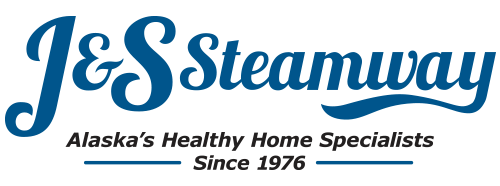Should you go with dry cleaning vs. steam cleaning?
Is one method better than the other? Are these even the right terms? Well, as usual, these terms only hint at part of the issue at hand. Both “dry” and “steam” are incomplete and inaccurate terms. Neither are technical terms that properly describe carpet cleaning methods.
There are actually four methods of carpet cleaning approved by the lICRC, the world’s most recognized body of certification for carpet and upholstery cleaners.
Method 1
Hot Water Extraction
Otherwise known as “steam cleaning,” hot water extraction is the pro-probably familiar with. Hot water extraction is the process most people are familiar with. Hot water extraction is the correct technical term, not steam cleaning. Actual steam is not used at all. A hot water solution is produced and immediately recovered, creating a “flushing” action on the carpet.
The smallest portable machine rented at the grocery store could be called a “steam cleaner,” but a powerful truck-mounted machine is obviously more capable of doing a thorough cleaning job.
However, the biggest and most important difference is in the person cleaning the carpet. A trained technician will know what pressure to use, what cleaning products to use, and how to get maximum soil removal and maximum spot removal without over-wetting the carpet or leaving sticky residue behind. The horror stories of carpet being wet for days are due to operator error, not because “steam” or hot water extraction caused it.
Hot water extraction applied properly will remove more soil than any other method. Further, anything that has seeped into the backing such as coffee, other beverages or urine can be “flushed out” with hot water extraction. This method can also be used in lightly soiled and maintenance situations as it is very versatile.
Method 2
Absorbent Pad
Also known as bonnet cleaning, this method employs a round pad that spins across the surface of the carpet, absorbing the soil. A solution is applied to the carpet or the pad to aid in releasing soils. This is a method that some may classify “dry cleaning” although water-based products are used in almost all “dry cleaning” systems; therefore, the term dry cleaning is not technical and would not be desired. Absorbent pad cleaning is not a deep-cleaning method. It should only be used to clean lightly soiled carpet and upholstery.
Method 3
Dry Compound
This method uses a powder that has been treated with detergents, water, and solvents. The powder compound is sprinkled on the carpet and a brush with cylindrical brushes is used to work the powder into the carpet pile. The solution in the powder releases the soil. The soil is then absorbed into the absorbent powder. This method should only be used to clean lightly soiled carpet and upholstery, and for maintenance cleaning.
Method 4
Shampoo or Dry Foam
In this method, a shampoo or foam is generated and worked into the carpet with a rotary brush or cylindrical brush machine. The shampoo or foam releases the soil. The soil is then vacuumed with the machine or allowed to dry and removed with a conventional vacuum cleaner. When using shampoo, great care should be taken to avoid leaving a sticky residue on the carpet. This method should only be used to clean lightly soiled carpet and upholstery and for maintenance cleaning.


